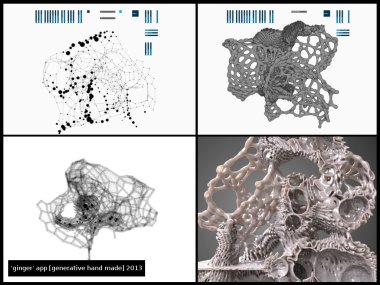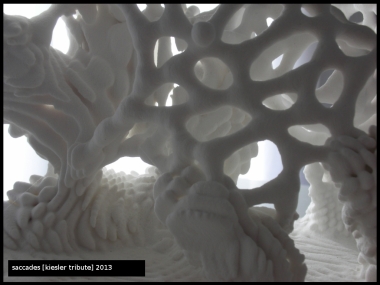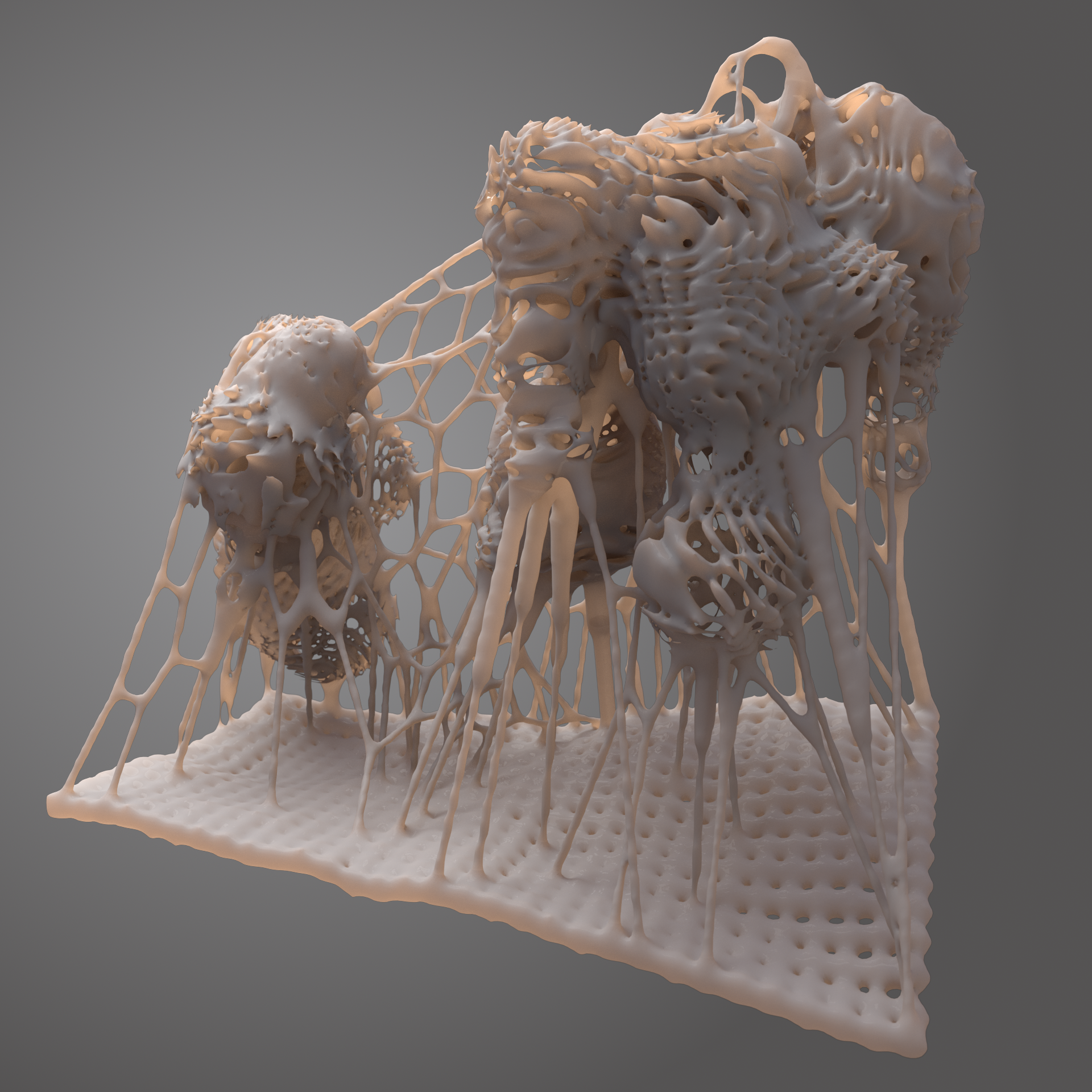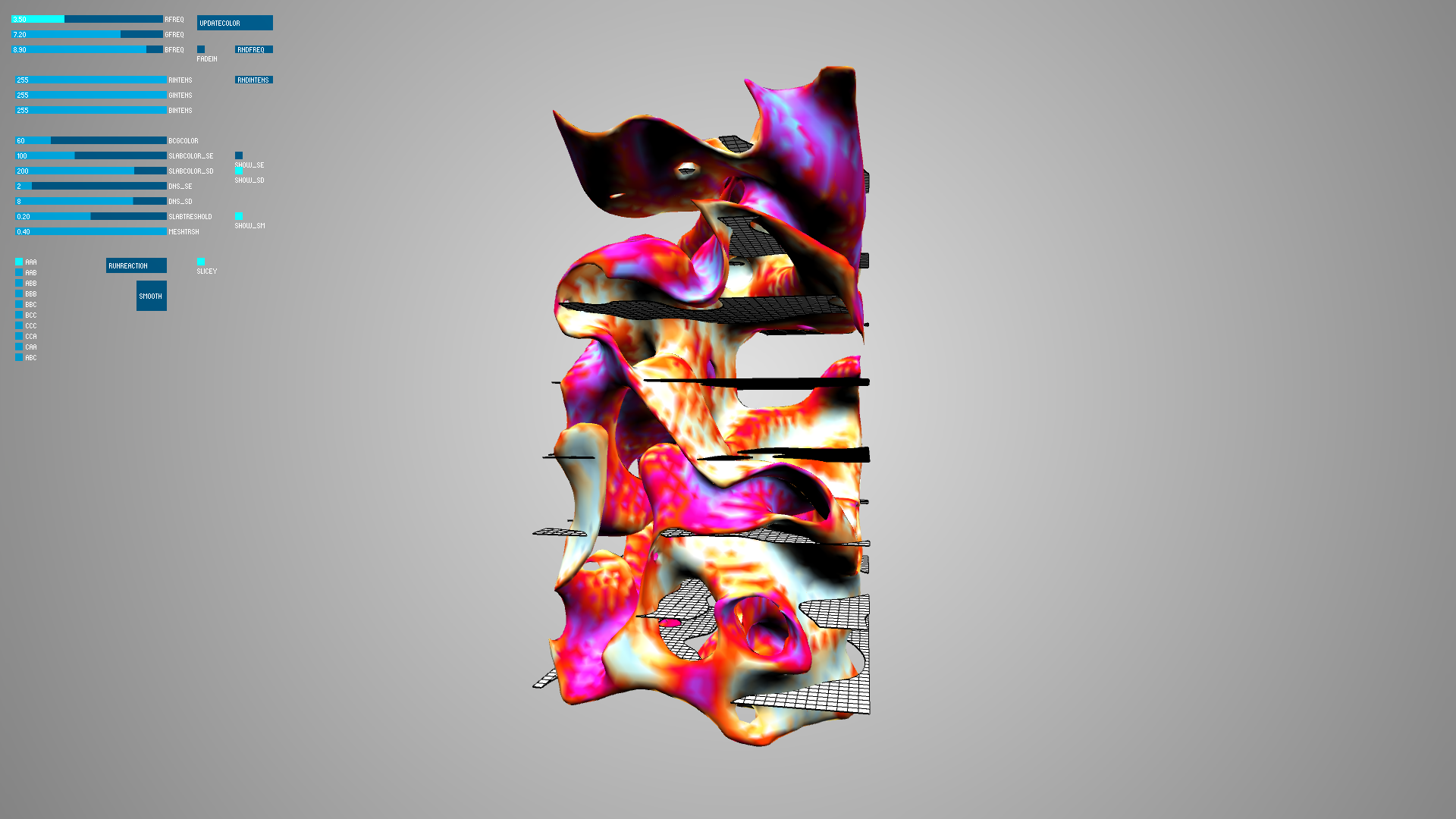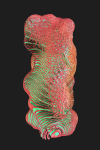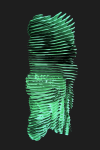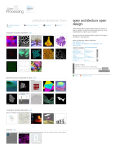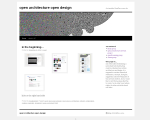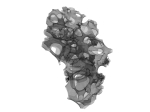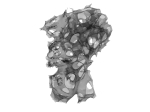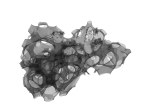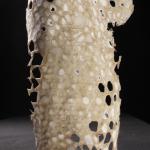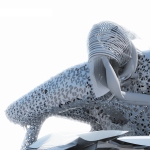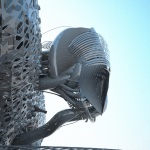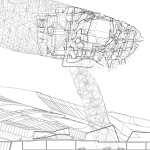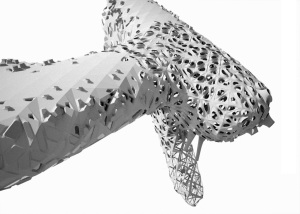this site is an archive of my work. current website: https://www.wiedenski.org/
Posts Tagged ‘architecture’
new things new site !
October 16, 2020saccades [ kiesler tribute]
February 20, 2014my humble tribute to Friedrich Kiesler and at the same time a study of several, possibly non-trival approaches to architectural drawing:
using an interactive generative-hand sketching app [ ginger 2.0 ]
and immediately turning it’s rough, unprocessed output into first-person perspective interactive walkthrough,
which in turn records visitors paths together with sets of points upon which their gaze rests.
visualising these records becomes an intricate map of the not-yet-existing environment perceived and navigated through.
this project’s output consists of series of apps, data visualisations as high quality prints and 3dprinted models.
please check this flickr set for better quality images
thanks to Sahand [ Department of Adequate Images ]
ginger 2.0
May 28, 2013along with other ‘speculative apps’ [check this post for more info] comes “ginger”. it’s a mixture of 3d feedback drawing and browsing for patterns within comb-like filtered noise space [similar to gaudism ]
this preview focuses on the rendering method i developed recently – per vertex fake ambient occlusion used for shifting local hue, saturation and brightness values. at the moment almost ridiculously slow, but gives me hope to introduce techniques of creating depth borrowed from watercolour painting.. kind of.
and just to keep the proper amount of geekiness – here is a screencast from the app:
much more on the ‘speculative apps’ topic very soon
gaudism
March 17, 2013Gaudism is about my two catalonian idols [rather obvious…] and another take on ‘shape as record’ methodology i’m developing over last two years. This generative-hand-made hybrid lets one playfully explore catenary structure principles as well as browse through interferences of field intensities. These behaviors are recorded as a shape.
here is a screencast from the app. notice different masses indicated by circles of different sizes.
https://sketchfab.com/show/7DEBA9IPoF8o3d4De668L9HdzDC
and here is a more refined, interactive 3d model
credits: this work is heavily inspired by Axel Kilian’s catenary project [ http://designexplorer.net/newscreens/cadenary/june2/index.html ] and would not be possible without Pierre Charalambos and Karsten Schmidt
snow crash
February 26, 2012further exploration of effects resulting from scale alteration: oscilating patterns of bz reaction as well as color interferences become more readible. it is as well evident, that this is just a sample within a bounding box.
speculative apps
February 25, 2012architecture discourse is traditionally shaped by drawings and critical writings. what happens, if they are interactive and easily translatable to the fabrication maschines code? what if they’re source is open, so that anyone can contribute? i’m currently working on a series of little design apps, focusing on specific aspects of the architecture i would like to see built… eventually. these are not made for any particular project, but rather for playfull exploration. in many cases they will be remixes or fusions of other designers work and therefore credited as such. i would love to discuss ideas about space this way.
first one happened to be about ‘saturation’-my subsitute for ‘detail’,’ornament’ or ‘articulation’. it’s neither ‘surface treatment’, nor pure texture. i’m excited about phenomenal intesity similar to Snow Crash 🙂
credits and technical info: ‘saturation’ is a remix of Tommaso Casucci‘s ‘3d BZreaction’, which in turn is a quick mod of Alasdair Turner’s ‘BZ reaction’. i merged it with a little simplified version of my former ‘fusion’ codes and added ‘floorslabs’ using Shane Nelson’s ‘scalar field polygonisation‘.
byzantine geology
February 15, 2012emerging building techologies seem to bring architecture back to it’s geological roots. it’s made for peer-troglodytes appreciating the byzantine beauty of digital sedimentation.
technical info/credits: obj exporter by muehlseife.de, luxrender, blender, toxiclibs
hackerspaces//superheroschools
February 8, 2012taking the idea of open-source communities becoming visible and contributing to the large scale material culture a little further:
if we can create objects, movies and small scale instalations entirely based on microdonations, would it be possible to seriously think of crowd-financed buildings? distributed investments oriented towards community goals?
maybe there is already a totaly new economy enabling architecture and therefore completely new audience… or the other way around.
if architecture mirrors existing power structures and creates spatial order representing socio-political hierarchies, it’s worth investigating how could it look like and how would it be made in these new circumstances.
this is a first sketch for a large hub in berlin, based on noInput sketches and fusion series shapes. refering to Woods’s “berlin free zone” project, it proposes diverse, yet indetermined spaces requiring creative effort in order to be inhabited. one cannot move in with old furniture:)
more photos on flickr. this is a beginning of a series. comming soon.
noInput
March 29, 2011mistakes in communication, compression glitches and all sorts of digital errors might be regarded as failures,
but looked upon carefully they unfold generative and imaginary potential.
inspired by Tsuyoshi Kusano, Dali’s late experiments [Tuna Fishing] and Marko Ciciliani’s music.
women from willendorf
March 1, 2011this pretentious title indicates the general direction of further research on shape as record of field conditions.
it’s a tendency to move away from industrial-design precision towards seemingly archaic, still mediated digitally ways of production and articulation of space. saturation or detail in this case results from specific tool/machine resolution- here simulated by pushing voxel space towards it’s capacity limits resulting in glitches and repetitive patterns.
noisenoise
January 25, 2011browsing through recursive noise space and exploring glitches in the new volumeutils.
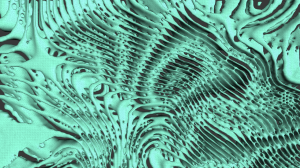 + some screenshots from the app used to search for interesting settings to be used in the time-extruded version.
+ some screenshots from the app used to search for interesting settings to be used in the time-extruded version.
parameters are responsible for noise scaling (both dimensions + change rate) as well as contour thresholds.
aLittleBitMore
December 15, 2010trying out functionality of o_a_o_d initiative, while working on some issues of my thesis project.
surreal potential of generative techniques in architecture is definitely underestimated.
shape is an isosurface around multiple particles moving in the perlin noise space. paneling(:)) scale and color results from the field characteristics as well. even though it’s rather cliche: agents, fields,panels etc, i think it’s nice to interact with…
aLittleBitMore refers to early practice of transparency and code sharing started most probably by Marc Fornes in 2005 and then followed by very many designers and students. What it became recently seems to be a sign of very natural inertia of such systems. each follower tries to follow other followers. as a result there is a lot of researchers investigating exactly the same thing: how to make panels on nurbs surface… no offense, i’m part of it.
it would be desirable to go a bit beyond this stagnation. seemingly there are related conclusions that people make globally resulting from exposure to the same stimuli: music, movies, software somehow align trajectories of designers thinking. seeking uniqueness in that homogeneity becomes rather fruitless. What stays truly unique is the immediate context each of designers operates within. family, friends, local connections that can result in small commissions. deep knowledge about own territory resulting from long term observation that cannot be compared to browsing Mumbai climate data from London…
culture of sharing design methods connected with linking back their material results can not only help finding applications for crazy amount of investigations that currently stay only as pictures. it can offer feedback for designers, making them lead real researches. furthermore it can inspire communities to use fresh design methods…
a lot of people currently talk about open design or work on systems enabling it. that’s why i’m so optimistic about it.
toxiclibs showreel 2010
October 13, 2010toxi makes one more step towards redefining how architects [and other digitally-creative people] might work very soon. tiny but beautiful.
fluid power.facade behavior
October 20, 2009study of a changing facade pattern. building skin is meant to be its dynamic thermal mass [water-filled elastic containers]. process of thermal regulation [internal and external heat gains redistribution] becomes an important aspect of building form. would it be possible to generalize this approach?
fluid power
October 20, 2009
renderings: 70’s comeback+zbigniew oksiuta‘s madness+digital error study
photos: physical model studies – flexible, bending tower, tensegrity structure inside of a concrete shell, facade.
turkish delight
October 16, 2009
pushing rhinoscript towards almost ridiculous performance:
1.input geometry[maya-made shape] gets voxelised
2.decisions about program distribution are made
3.internal organization is created upon the voxel structure
4.output of the system is a model with adjustable level of saturation
with Julian Fors and Jan Gronkiewicz
published in AD Exuberance



